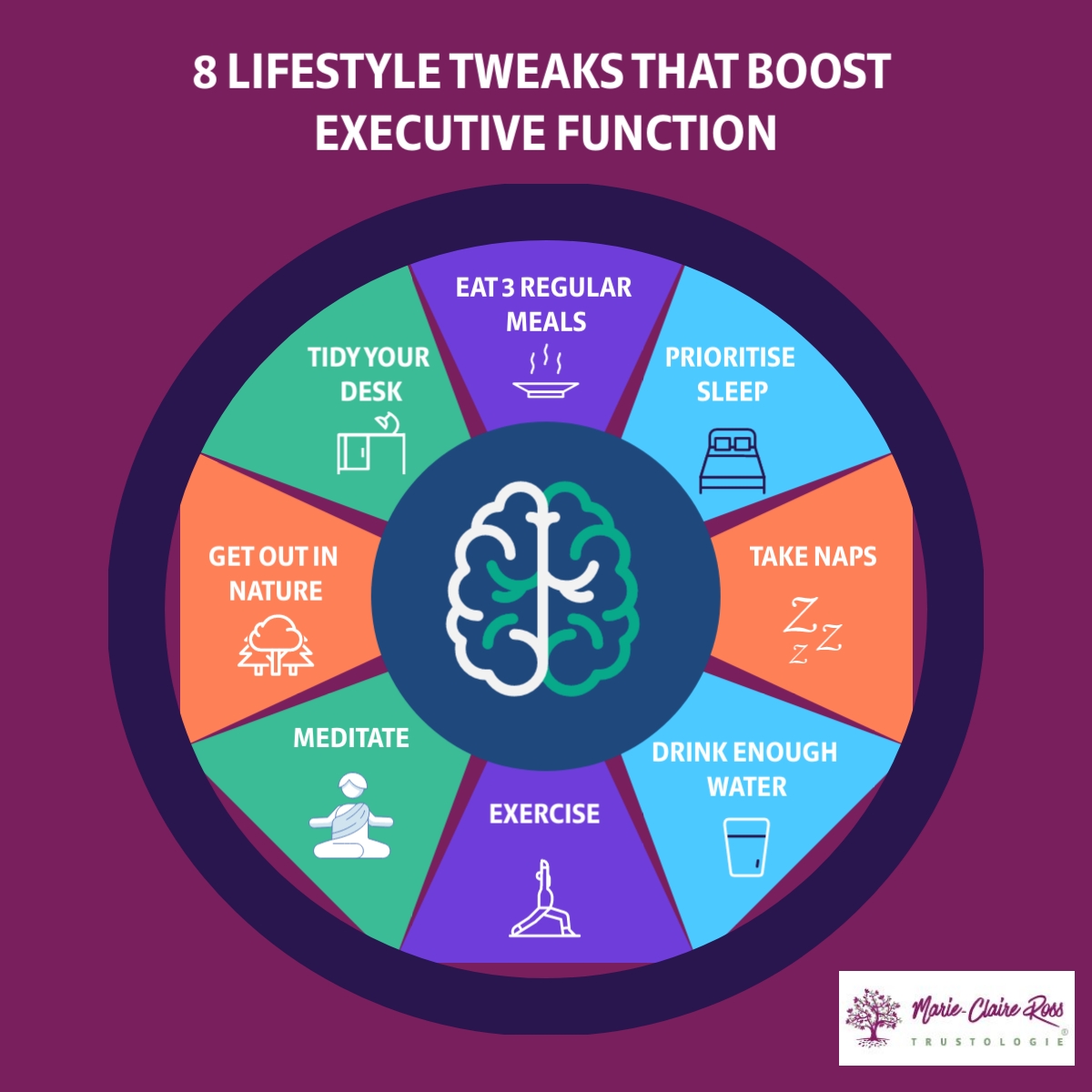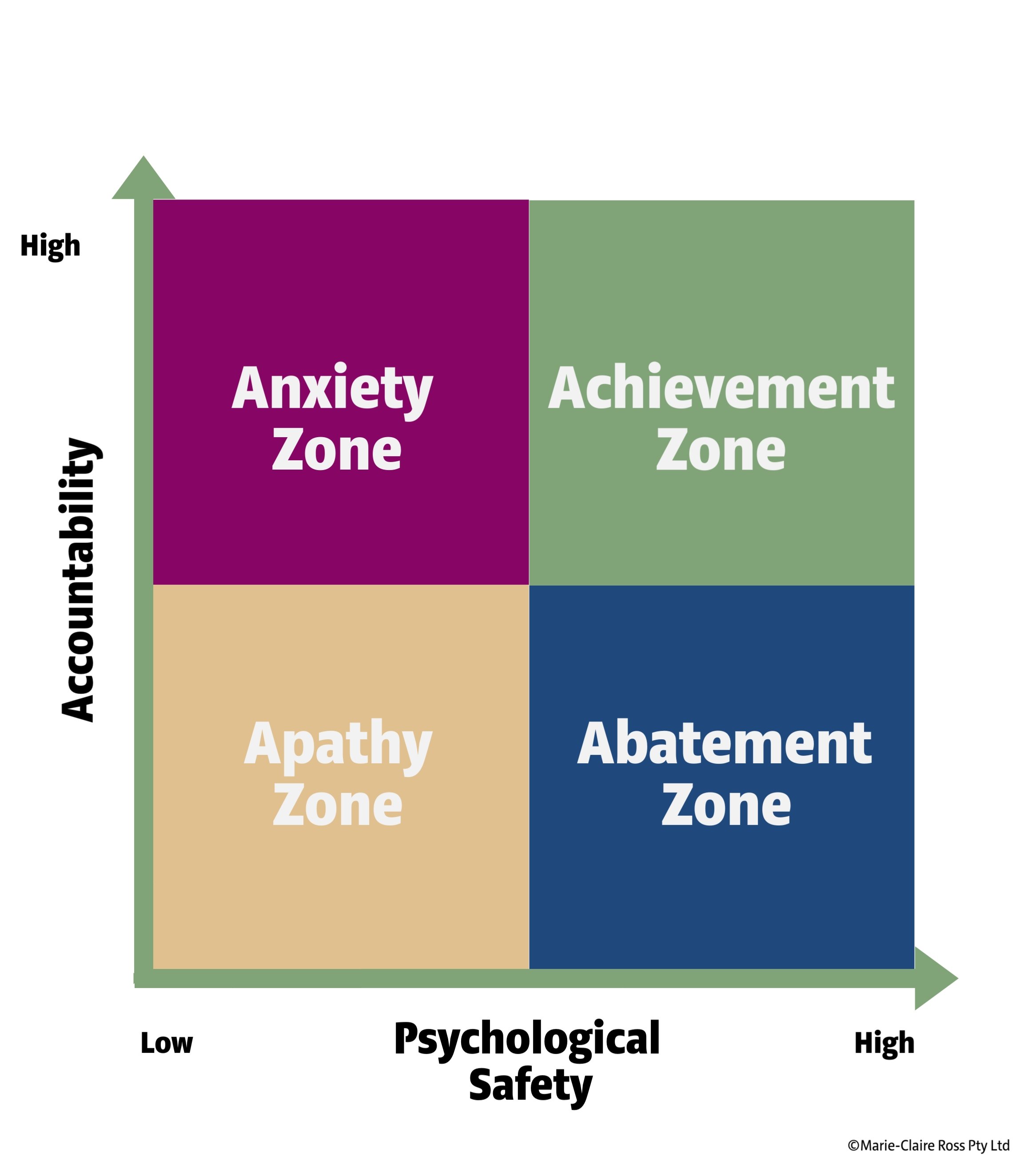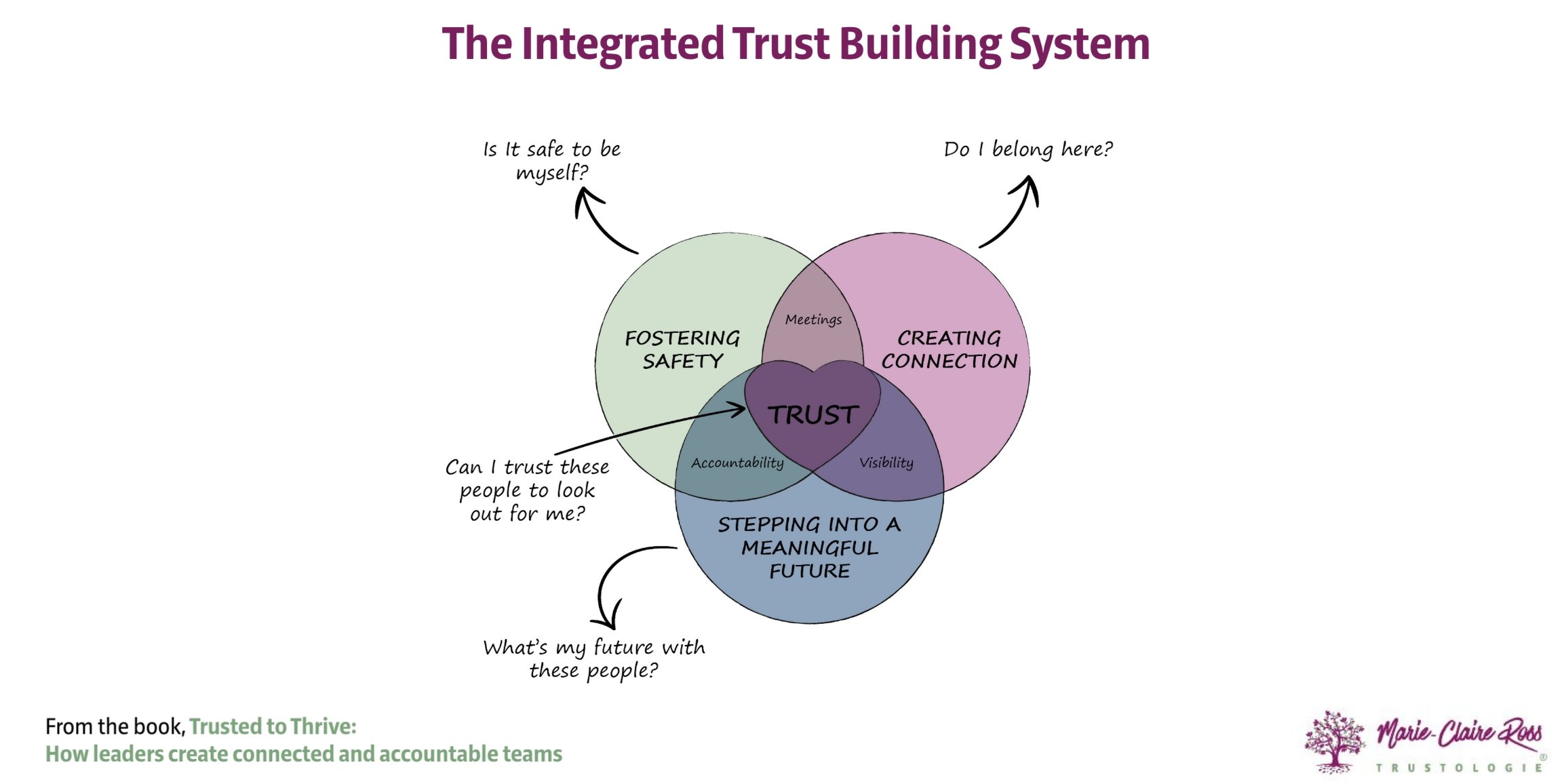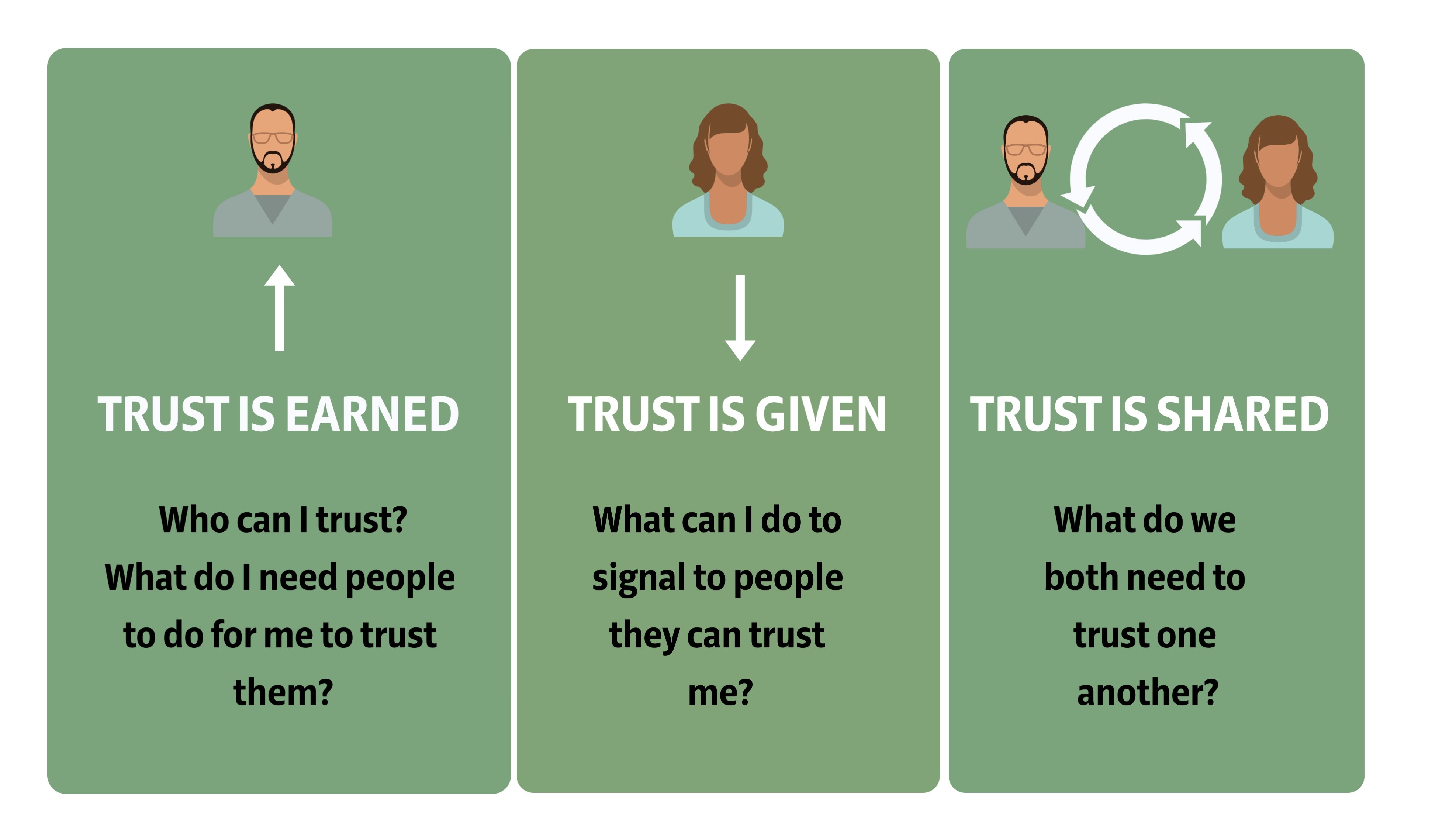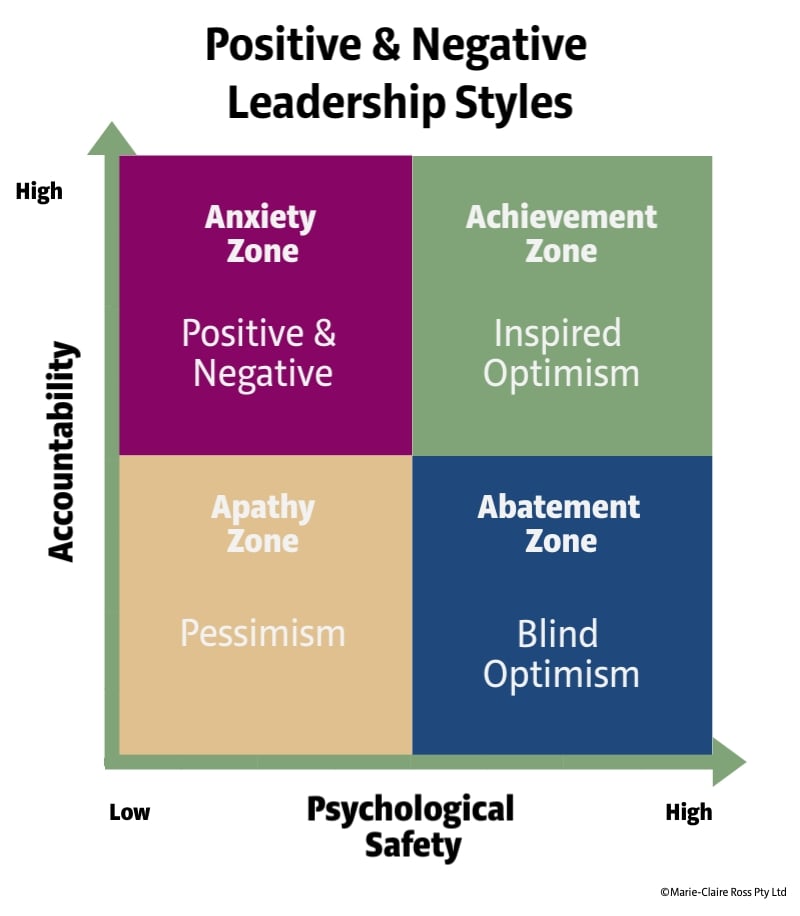
|
As I talk about in my book, Trusted to Thrive: How leaders create connected and accountable teams (get a free chapter here), research has found two factors that lead to high performance in teams: psychological safety and accountability. Understanding how these interact can be a game-changer for leadership.
While I have unpacked these zones in many articles, what I haven't commonly talked about was how these team zones link up with positive or negative leadership styles. Another way of looking at it is how optimistic or pessimistic the leader feels.
So let's dig deeper and find out how optimism and pessimism work in these different team zones.
Achievement Zone - Leader addresses both positive and negatives
Research has found that leaders who promote positive energy have a significant impact on innovation, organisational performance, and employee satisfaction.
This requires leaders who prioritise being positive and exuding a positive, upbeat energy, in order to maintain enthusiasm in their team, even when things get difficult.
This involves having a strong belief that things will work out, no matter what happens. It's about believing that together, as a team, you'll be able to solve challenges and forge a path forward. It means accepting that things will go wrong, but you don't let negative events derail you. Your mindset stays positive and optimistic. You look for the lesson and gain clarity from
what you do not want to help better determine
what you do want.
It means being willing, and humble enough, to question your assumptions. Starting again when things don't work out - iterating and tweaking.
It's what I call
inspired optimism.
It's not easy, as it requires being
willing to address both failure and success - rather than the typical leadership approach of favouring one over the other. Consequently, it generates high levels of psychological safety because errors and concerns are openly discussed, ensuring the team can course correct and avert a potential crisis.
This approach instills a belief in your team that anything is within their reach because you even thought you may have a plan, you're prepared to pivot. When challenges arise (as they inevitably will), your focus will be on finding solutions rather than assigning blame. It's a compassionate approach that encourages the team to tackle problems together, instead of the leader ignoring issues or placing the burden solely on a few individuals to resolve.
And like the old saying "no pain, no gain" such relentless pursuit of the truth results in a sense of progress, reinvention, and growth, which in turn results in a more meaningful and positive work experience.
Anxiety Zone - Hopeful, but worried about the future
In the Anxiety Zone, leaders often feel the positive pull of an inspiring vision or the dopamine rush of ticking things off a checklist, while they are often fighting an internal battle.
They bounce between feeling positive depending on how work is going to feeling anxious when things start to go wrong. They vacillate between being positive and negative. With negativity being their predominant driving force.
Their underlying fear about things not working out means they work extra hard and keep themselves busy to avoid feeling their (overwhelmingly) negative emotions. They are often guilty of overworking and have difficulty managing a healthy work life balance.
Often, when we keep ourselves constantly busy
it's because there is a benefit in avoiding something. That could be confronting our feelings of not achieving, not feeling worthy, concerns over what people think about us or not feeling safe.
Instead of seeing negative emotions as a threat, it's important to understand that emotions provide us with information. They provide helpful guidance. What we do with them matters. Avoiding them often means ignoring our intuition that something is wrong and needs close attention.
At the same time, if we are being too fearful and (unintentionally) frightening our team members, we also need to be aware of that. Doing the emotional work so that we can reset ourselves or find a way to feel more certain is healthier for ourselves and our teams.
Leaders who allow their team to express emotions create a sense of psychological safety. Otherwise, team members are forced to drive their concerns underground - sabotaging the team's results.
Abatement Zone - Blind optimism/ignore negatives
In my work with leadership teams, I come across plenty of executives who are positive and excited about the vision. Generating a palpable energy that excites employees about where they are going and why. Executives who love asking employees about what new ideas they have and new ways of doing things. They get excited by a new client being signed up. They send out corporate communications with a rose-coloured tint. Yet, there is a flip side to all this positivity. And that is leadership don't want to talk about what's not working. Even corporate communication ignores missed targets. This is often called excessive optimism or blind positivity. Over time, it can cause disastrous consequences to a company's culture devolving into toxic positivity. Toxic positivity promotes the belief that regardless of how dire or stressful a situation may be, you can alter the outcome simply by maintaining a positive mindset and thinking optimistically. However, this approach places the burden on individuals to endure and persevere within toxic, dysfunctional, and flawed structures and systems. It fails to prioritise compassion, empathy, and the open expression of negative emotions, while also disregarding the real issues that impact the well-being of workers. With blind positivity, executives tend to shut down any negative commentary around a lack of resourcing, system issues or capability gaps. They get a bit cranky with people if they say "We don't think we can do it. Here's why." In their minds, those that highlight issues are "too negative" and best to be avoided. Creating confusion amongst employees who are used to having open banter about what is going on, but who don't quite realise there is an unspoken delineation between sharing new ideas and highlighting problems. Focusing only on the positives creates fake psychological safety. You are only safe if you beat the drum of a powerful vision, but if you question it, your safety is at risk. Genuine psychological safety means that everyone feels supported to share the truth - not fake rah-rah stories that make their leaders feel comfortable, smart and validated. Abatement means declining in performance. It's a team that is so full of hubris that they don't realise that their lack of improvement and blind hope to reach a vision, is ensuring that their performance is actually getting worse, not better. It's pretending that everything is fine, when it's not. Apathy Zone - Pessimism is regarded as a legitimate leadership strategy The last zone is the Apathy Zone where pessimism abounds. So palpable is the negativity that you can feel it when you walk into the team's office. In this zone, leaders are plagued with worry about what lies ahead. They frequently express their concerns, whether it be regarding a new approach, their workload, or the expectations placed on their team. Not realising that this approach is alienating them from management. They dedicate a significant amount of time to holding onto the past and voicing their grievances about a flawed system. Many pessimistic leaders believe that by playing devil's advocate, they are helping management make better decisions and be prepared for potential trouble. However, their negative mindset almost seems to invite bad things to happen, allowing them to revel in saying, "I knew that would happen. You should have listened to me." Pessimism can drain individuals and organisations of the motivation to accomplish tasks. It makes work tedious. Apathy Zone teams are more likely to have conflict, complain about issues when the manager isn't present and hide their true feelings. Safety is low because individuals know that any new ideas will be shot down and blame will be high if they make an innocent mistake. Positive Leadership Styles Inspire Others Leading in the Achievement Zone requires a leader who is courageous and resilient in the face of resistance. As Arnold Schwarzenegger said in the brilliant Netflix documentary, Arnold, "I saw myself on that stage...and when you visualise something really clearly, you believe 100% that you can get there. There was a lot of things I had to learn, obstacles I had to overcome...but the only thing no one can take from you is your mind." Inspired optimism means not allowing negative events to take us over. It's not interpreting an obstacle as a sign that we are doing something wrong or we aren't good enough. It means seeing hardships as learning experiences and temporary setbacks - no matter how tough. And it means being confident and determined to manifest a vision. Just like Arnold Schwarzenegger when people told him that there was no demand for muscular actors with an unusual accent. Being in the Achievement Zone is not always happy and light-hearted. It's often challenging and hard - just like a new workout. There are times when we have to face the music and receive tough feedback, so that we can confront the gap. Using that discomfort to propel us to the positive future we crave. And it's that type of leader, rare and courageous - that people will follow in a heart beat. If you want to learn how to stay in the Achievement Zone and encourage your team to join you, then join my Tribe of Trusted Leaders Mastermind. Enrolments open for August. Frequently Asked Questions (FAQs) |
